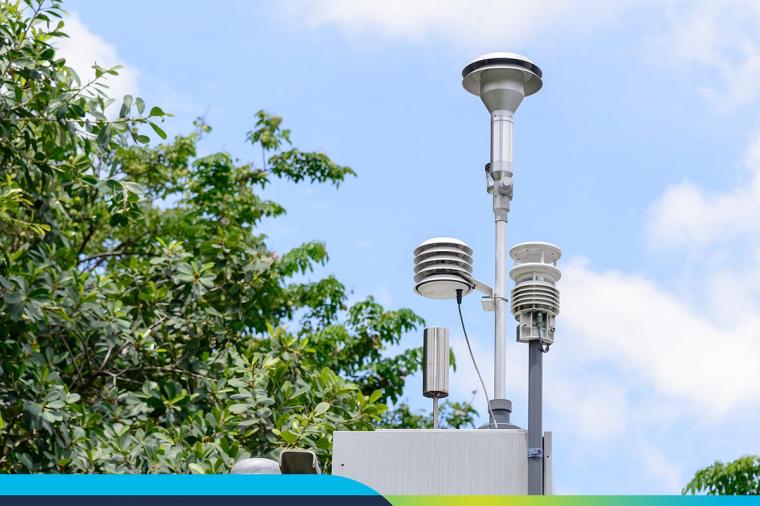Mapping Out a Plan: Geospatial Data helps Agencies Respond & Collaborate
Map-making has come a long way since Lewis and Clark set off on their cross-country trek to the Pacific Northwest more than 200 years ago.
By offering views from above and below, today’s detailed geospatial data lets first responders and public safety officials respond to emergencies quickly and collaborate across agency boundaries.
 Hurricane Katrina, other recent natural disasters and terrorist threats have underscored the usefulness of geographic information systems (GIS) when it comes to responding to emergencies – and the importance of being proactive instead of reactive.
“These days, more and more federal and state agencies are using GIS, not only to leverage accurate maps of emergency areas,” said John Cassidy, Vice President, GIS and Government Markets at Tele Atlas, “but also to identify the exact location of incidents, hazards and strategic assets.”
Tele Atlas provides digital maps and dynamic content to government and private organizations worldwide.
“By combining geocoding, mapping and routing functionality, GIS can provide a single, enterprise-wide resource that is seamless across all agencies and programs,” Cassidy said.
For example, the statewide Virtual Alabama project (virtual.alabama.gov) allows geospatial data to be stored in a single location so that Alabama state, county and municipal governments – including first responders and law enforcement – can access it. The database of information is superimposed on satellite imagery and aerial photography of all 67 counties. If there is a hurricane, for example, agencies can monitor evacuation routes and evaluate the damage left by the storm. The Virtual Alabama project, which is aiding emergency responders and law enforcement officials in the state to evaluate and share information, is based on Google Earth data provided by Tele Atlas.
Another example is what the California Orange County Fire Chiefs Association has done. Its Public Safety GIS Interoperability Project provides a detailed street-level basemap of the entire county so that agencies can share information countywide and dispatchers can find and deploy the closest fire crew to an emergency, even if they are in another county. Before this was in place, crews lost valuable time responding to emergencies due to inconsistent maps and the lack of real-time vehicle tracking between neighboring agencies.
At the foundation of the Orange County program is accurate map data from Tele Atlas. When the data is combined with digital aerial photography and other technology, the basemap displays site details such as surrounding brush, roof type and width of passages.
GIS is a critical component of any public sector emergency pre-planning and response strategy because it helps agencies “find, visualize and route,” Cassidy said.
Using GIS, agencies can determine where assets and constituents are (find), create and propagate richly detailed yet easy-to-read cartography for intuitive interpretation of a situation (visualize), and dispatch the right people to the right place at the right time with the right equipment for the job (route).
One challenge in emergency situations can occur “when data assets such as facilities information, land-base data, aerial photography, utility information and addressing are maintained in disparate locations by multiple agencies and in separate file formats,” Cassidy said.
This can dramatically slow down response times, increase the cost and introduce errors into the data, Cassidy added.
“Having all this disparate information stored in different places means that in a time of need, it all has to be merged into a single database to be used more effectively,” he said. “This means that changes made by one group may not get added to the database of another group, or that errors from one group will continue to get served to users who know it’s wrong.”
Fortunately, agencies today have a more comprehensive, accurate enterprise approach to make geocoding, mapping and routing information available than they did five years ago, Cassidy said. There is more of a technological infrastructure in place today that supports sharing, including over the Internet and via mobile devices. And there will be faster ways to keep map data accurate, such as Tele Atlas’ plans to leverage data from personal navigation devices.
The advances in GIS have been positive. When Hurricane Katrina hit the Gulf Coast, federal, state and local agencies provided geospatial data to help locate 911 callers, map potential shelter locations and help predict the amount of debris to be hauled away. But it was all done with little coordination.
“Five years ago it was a reactive situation,” Cassidy said. “The disaster occurs, the phones light up and requests come to donate data to help with the response. Now agencies have their collective act together.”
By Colleen O’Hara, Reporter, [acronym] magazine
Originally published in [acronym] magazine, Issue 10
Hurricane Katrina, other recent natural disasters and terrorist threats have underscored the usefulness of geographic information systems (GIS) when it comes to responding to emergencies – and the importance of being proactive instead of reactive.
“These days, more and more federal and state agencies are using GIS, not only to leverage accurate maps of emergency areas,” said John Cassidy, Vice President, GIS and Government Markets at Tele Atlas, “but also to identify the exact location of incidents, hazards and strategic assets.”
Tele Atlas provides digital maps and dynamic content to government and private organizations worldwide.
“By combining geocoding, mapping and routing functionality, GIS can provide a single, enterprise-wide resource that is seamless across all agencies and programs,” Cassidy said.
For example, the statewide Virtual Alabama project (virtual.alabama.gov) allows geospatial data to be stored in a single location so that Alabama state, county and municipal governments – including first responders and law enforcement – can access it. The database of information is superimposed on satellite imagery and aerial photography of all 67 counties. If there is a hurricane, for example, agencies can monitor evacuation routes and evaluate the damage left by the storm. The Virtual Alabama project, which is aiding emergency responders and law enforcement officials in the state to evaluate and share information, is based on Google Earth data provided by Tele Atlas.
Another example is what the California Orange County Fire Chiefs Association has done. Its Public Safety GIS Interoperability Project provides a detailed street-level basemap of the entire county so that agencies can share information countywide and dispatchers can find and deploy the closest fire crew to an emergency, even if they are in another county. Before this was in place, crews lost valuable time responding to emergencies due to inconsistent maps and the lack of real-time vehicle tracking between neighboring agencies.
At the foundation of the Orange County program is accurate map data from Tele Atlas. When the data is combined with digital aerial photography and other technology, the basemap displays site details such as surrounding brush, roof type and width of passages.
GIS is a critical component of any public sector emergency pre-planning and response strategy because it helps agencies “find, visualize and route,” Cassidy said.
Using GIS, agencies can determine where assets and constituents are (find), create and propagate richly detailed yet easy-to-read cartography for intuitive interpretation of a situation (visualize), and dispatch the right people to the right place at the right time with the right equipment for the job (route).
One challenge in emergency situations can occur “when data assets such as facilities information, land-base data, aerial photography, utility information and addressing are maintained in disparate locations by multiple agencies and in separate file formats,” Cassidy said.
This can dramatically slow down response times, increase the cost and introduce errors into the data, Cassidy added.
“Having all this disparate information stored in different places means that in a time of need, it all has to be merged into a single database to be used more effectively,” he said. “This means that changes made by one group may not get added to the database of another group, or that errors from one group will continue to get served to users who know it’s wrong.”
Fortunately, agencies today have a more comprehensive, accurate enterprise approach to make geocoding, mapping and routing information available than they did five years ago, Cassidy said. There is more of a technological infrastructure in place today that supports sharing, including over the Internet and via mobile devices. And there will be faster ways to keep map data accurate, such as Tele Atlas’ plans to leverage data from personal navigation devices.
The advances in GIS have been positive. When Hurricane Katrina hit the Gulf Coast, federal, state and local agencies provided geospatial data to help locate 911 callers, map potential shelter locations and help predict the amount of debris to be hauled away. But it was all done with little coordination.
“Five years ago it was a reactive situation,” Cassidy said. “The disaster occurs, the phones light up and requests come to donate data to help with the response. Now agencies have their collective act together.”
By Colleen O’Hara, Reporter, [acronym] magazine
Originally published in [acronym] magazine, Issue 10
 Hurricane Katrina, other recent natural disasters and terrorist threats have underscored the usefulness of geographic information systems (GIS) when it comes to responding to emergencies – and the importance of being proactive instead of reactive.
“These days, more and more federal and state agencies are using GIS, not only to leverage accurate maps of emergency areas,” said John Cassidy, Vice President, GIS and Government Markets at Tele Atlas, “but also to identify the exact location of incidents, hazards and strategic assets.”
Tele Atlas provides digital maps and dynamic content to government and private organizations worldwide.
“By combining geocoding, mapping and routing functionality, GIS can provide a single, enterprise-wide resource that is seamless across all agencies and programs,” Cassidy said.
For example, the statewide Virtual Alabama project (virtual.alabama.gov) allows geospatial data to be stored in a single location so that Alabama state, county and municipal governments – including first responders and law enforcement – can access it. The database of information is superimposed on satellite imagery and aerial photography of all 67 counties. If there is a hurricane, for example, agencies can monitor evacuation routes and evaluate the damage left by the storm. The Virtual Alabama project, which is aiding emergency responders and law enforcement officials in the state to evaluate and share information, is based on Google Earth data provided by Tele Atlas.
Another example is what the California Orange County Fire Chiefs Association has done. Its Public Safety GIS Interoperability Project provides a detailed street-level basemap of the entire county so that agencies can share information countywide and dispatchers can find and deploy the closest fire crew to an emergency, even if they are in another county. Before this was in place, crews lost valuable time responding to emergencies due to inconsistent maps and the lack of real-time vehicle tracking between neighboring agencies.
At the foundation of the Orange County program is accurate map data from Tele Atlas. When the data is combined with digital aerial photography and other technology, the basemap displays site details such as surrounding brush, roof type and width of passages.
GIS is a critical component of any public sector emergency pre-planning and response strategy because it helps agencies “find, visualize and route,” Cassidy said.
Using GIS, agencies can determine where assets and constituents are (find), create and propagate richly detailed yet easy-to-read cartography for intuitive interpretation of a situation (visualize), and dispatch the right people to the right place at the right time with the right equipment for the job (route).
One challenge in emergency situations can occur “when data assets such as facilities information, land-base data, aerial photography, utility information and addressing are maintained in disparate locations by multiple agencies and in separate file formats,” Cassidy said.
This can dramatically slow down response times, increase the cost and introduce errors into the data, Cassidy added.
“Having all this disparate information stored in different places means that in a time of need, it all has to be merged into a single database to be used more effectively,” he said. “This means that changes made by one group may not get added to the database of another group, or that errors from one group will continue to get served to users who know it’s wrong.”
Fortunately, agencies today have a more comprehensive, accurate enterprise approach to make geocoding, mapping and routing information available than they did five years ago, Cassidy said. There is more of a technological infrastructure in place today that supports sharing, including over the Internet and via mobile devices. And there will be faster ways to keep map data accurate, such as Tele Atlas’ plans to leverage data from personal navigation devices.
The advances in GIS have been positive. When Hurricane Katrina hit the Gulf Coast, federal, state and local agencies provided geospatial data to help locate 911 callers, map potential shelter locations and help predict the amount of debris to be hauled away. But it was all done with little coordination.
“Five years ago it was a reactive situation,” Cassidy said. “The disaster occurs, the phones light up and requests come to donate data to help with the response. Now agencies have their collective act together.”
By Colleen O’Hara, Reporter, [acronym] magazine
Originally published in [acronym] magazine, Issue 10
Hurricane Katrina, other recent natural disasters and terrorist threats have underscored the usefulness of geographic information systems (GIS) when it comes to responding to emergencies – and the importance of being proactive instead of reactive.
“These days, more and more federal and state agencies are using GIS, not only to leverage accurate maps of emergency areas,” said John Cassidy, Vice President, GIS and Government Markets at Tele Atlas, “but also to identify the exact location of incidents, hazards and strategic assets.”
Tele Atlas provides digital maps and dynamic content to government and private organizations worldwide.
“By combining geocoding, mapping and routing functionality, GIS can provide a single, enterprise-wide resource that is seamless across all agencies and programs,” Cassidy said.
For example, the statewide Virtual Alabama project (virtual.alabama.gov) allows geospatial data to be stored in a single location so that Alabama state, county and municipal governments – including first responders and law enforcement – can access it. The database of information is superimposed on satellite imagery and aerial photography of all 67 counties. If there is a hurricane, for example, agencies can monitor evacuation routes and evaluate the damage left by the storm. The Virtual Alabama project, which is aiding emergency responders and law enforcement officials in the state to evaluate and share information, is based on Google Earth data provided by Tele Atlas.
Another example is what the California Orange County Fire Chiefs Association has done. Its Public Safety GIS Interoperability Project provides a detailed street-level basemap of the entire county so that agencies can share information countywide and dispatchers can find and deploy the closest fire crew to an emergency, even if they are in another county. Before this was in place, crews lost valuable time responding to emergencies due to inconsistent maps and the lack of real-time vehicle tracking between neighboring agencies.
At the foundation of the Orange County program is accurate map data from Tele Atlas. When the data is combined with digital aerial photography and other technology, the basemap displays site details such as surrounding brush, roof type and width of passages.
GIS is a critical component of any public sector emergency pre-planning and response strategy because it helps agencies “find, visualize and route,” Cassidy said.
Using GIS, agencies can determine where assets and constituents are (find), create and propagate richly detailed yet easy-to-read cartography for intuitive interpretation of a situation (visualize), and dispatch the right people to the right place at the right time with the right equipment for the job (route).
One challenge in emergency situations can occur “when data assets such as facilities information, land-base data, aerial photography, utility information and addressing are maintained in disparate locations by multiple agencies and in separate file formats,” Cassidy said.
This can dramatically slow down response times, increase the cost and introduce errors into the data, Cassidy added.
“Having all this disparate information stored in different places means that in a time of need, it all has to be merged into a single database to be used more effectively,” he said. “This means that changes made by one group may not get added to the database of another group, or that errors from one group will continue to get served to users who know it’s wrong.”
Fortunately, agencies today have a more comprehensive, accurate enterprise approach to make geocoding, mapping and routing information available than they did five years ago, Cassidy said. There is more of a technological infrastructure in place today that supports sharing, including over the Internet and via mobile devices. And there will be faster ways to keep map data accurate, such as Tele Atlas’ plans to leverage data from personal navigation devices.
The advances in GIS have been positive. When Hurricane Katrina hit the Gulf Coast, federal, state and local agencies provided geospatial data to help locate 911 callers, map potential shelter locations and help predict the amount of debris to be hauled away. But it was all done with little coordination.
“Five years ago it was a reactive situation,” Cassidy said. “The disaster occurs, the phones light up and requests come to donate data to help with the response. Now agencies have their collective act together.”
By Colleen O’Hara, Reporter, [acronym] magazine
Originally published in [acronym] magazine, Issue 10
















































